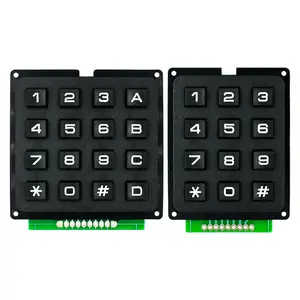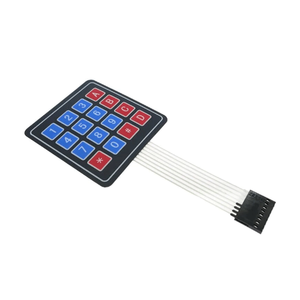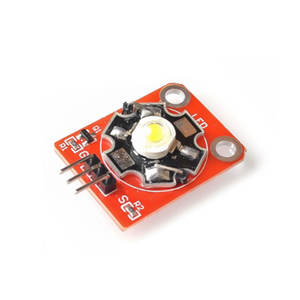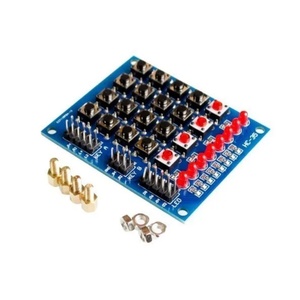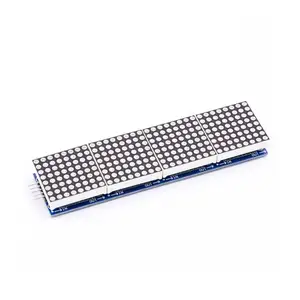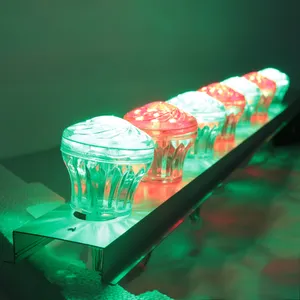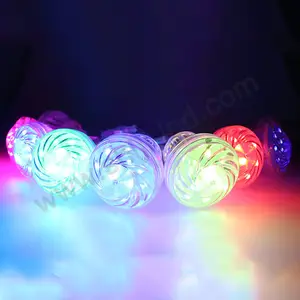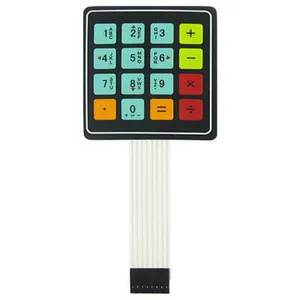4x4 Led Matrix Arduino





 1/8
1/8








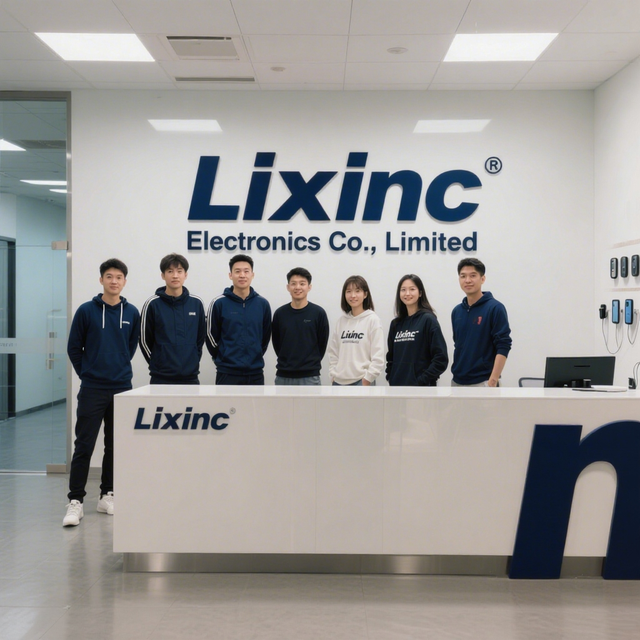








 1/2
1/2




 1/15
1/15






 1/2
1/2






 1/1
1/1



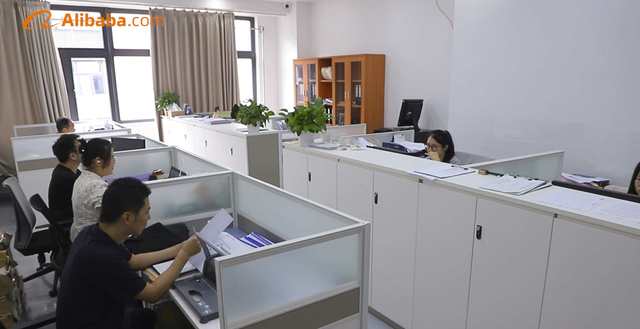















 1/29
1/29






About 4x4 led matrix arduino
Where to Find 4x4 LED Matrix Arduino Suppliers?
China's electronics manufacturing ecosystem, particularly in Shenzhen and Guangdong Province, serves as the global hub for microcontroller-compatible LED components, including 4x4 LED matrix modules for Arduino applications. The region hosts a dense network of specialized electronics suppliers with vertically integrated production lines spanning PCB fabrication, SMT assembly, and final module testing. This concentration enables rapid prototyping, scalable batch production, and tight integration between component sourcing and finished goods output.
Suppliers leverage automated surface-mount technology (SMT) lines and in-house programming capabilities to produce standardized and customizable LED matrices compatible with Arduino development platforms. Many facilities operate under ISO-compliant quality management systems, supporting consistent yield rates and traceability across production batches. With average on-time delivery performance exceeding 90%, these suppliers offer lead times typically ranging from 7–15 days for sample orders and 15–25 days for bulk shipments, depending on customization scope and order volume.
How to Choose 4x4 LED Matrix Arduino Suppliers?
Procurement decisions should be guided by objective evaluation criteria focused on technical reliability, production transparency, and transactional safeguards:
Technical Compatibility & Specifications
Verify that products explicitly support Arduino integration through standard communication protocols (e.g., I²C, SPI) or driver ICs such as MAX7219, TM1637, or WS2812B. Confirm pinout configurations, voltage requirements (typically 3.3V–5V), and library compatibility (e.g., Adafruit NeoPixel, LedControl). For RGB variants, assess color accuracy, brightness levels (measured in mcd), and PWM control capability.
Production and Quality Assurance
Prioritize suppliers demonstrating measurable quality control metrics:
- On-time delivery rate >90%
- Response time ≤2 hours for inquiry resolution
- Reorder rate above 25% indicating customer retention
- Documented testing procedures for solder joint integrity, current draw, and functional validation
Cross-reference supplier claims with verifiable transaction data, including online revenue indicators and historical order fulfillment records. In-house engineering teams enhance customization responsiveness, particularly for firmware modifications or mechanical redesigns.
Customization and Transaction Security
Assess suppliers' ability to accommodate customizations in size, color (red, blue, white, RGB), labeling, packaging, and embedded logic. Require clear terms for sample provisioning and prototype validation. Utilize secure payment mechanisms with milestone-based disbursements, especially for first-time engagements. Insist on pre-shipment inspection options or third-party quality audits for orders exceeding 1,000 units.
What Are the Best 4x4 LED Matrix Arduino Suppliers?
| Company Name | Main Products | Online Revenue | On-Time Delivery | Reorder Rate | Avg. Response | MOQ Flexibility | Customization Options |
|---|---|---|---|---|---|---|---|
| Shenzhen Dahongxing Electronics Co., Ltd. | LED Matrix, Development Boards, Modules | US $200,000+ | 93% | 26% | ≤2h | Min. 10 pieces | Color, material, size, logo, packaging, graphics |
| Shenzhen Lonten Technology Co., Limited | LED Modules, MAX7219, Keypads | US $140,000+ | 91% | 27% | ≤7h | As low as 1 piece | Limited customization; strong in standard modules |
| Shenzhen Dongheng Electronic Technology Co., Ltd. | Matrix Keyboards, LED Displays, ICs | US $80,000+ | 95% | <15% | ≤1h | Min. 10 pieces | Basic array and switch configurations |
| Shenzhen Jiaqisheng Electronics Co., Ltd. | RGB LED Arrays, Keypads, TM1637 | US $2,000+ | 85% | <15% | ≤6h | As low as 1 piece | Focused on electronic modules and kits |
| Lixinc Electronics Co., Limited | MAX7219, TM1637, LED Modules | US $70,000+ | 87% | 24% | ≤2h | Min. 10–50 pieces | Standardized industrial-grade displays |
Performance Analysis
Shenzhen Dahongxing and Shenzhen Lonten stand out for high reorder rates (26–27%) and robust technical offerings, indicating strong market confidence. Dongheng leads in operational efficiency with a 95% on-time delivery rate and sub-hour response times, making it ideal for urgent procurement cycles. Suppliers like Jiaqisheng and Lixinc offer low MOQs down to one unit, facilitating prototyping and small-batch development. However, lower reorder rates suggest potential gaps in long-term satisfaction or consistency. Buyers seeking customized solutions should prioritize Dahongxing due to its comprehensive customization portfolio, while those requiring rapid sampling may benefit from Dongheng’s responsiveness.
FAQs
What is the typical MOQ for 4x4 LED matrix modules?
Minimum Order Quantities vary by supplier. Some offer as few as 1 piece for testing, while others require 10–50 units. High-flexibility suppliers often cater to makers and R&D teams, whereas bulk-oriented vendors enforce higher MOQs for cost efficiency.
Are 4x4 LED matrices Arduino-ready?
Most listed products are designed for Arduino compatibility, using common driver ICs like MAX7219 or TM1637. Confirm library availability and wiring diagrams before integration. Some models include pre-flashed firmware; others require user programming.
Can suppliers provide RoHS or CE compliance documentation?
Compliance documentation availability varies. Leading suppliers often adhere to RoHS standards for hazardous substance control. Request material declarations or test reports directly, especially for export to regulated markets.
How long does sampling take?
Sample processing typically takes 3–7 days, plus 5–10 days for international shipping. Express delivery options reduce transit time to 3–5 days. Custom samples may extend timelines to 10–14 days depending on complexity.
Is firmware customization available?
Limited firmware adjustments are feasible with suppliers offering programmable modules. Full customization requires engagement with suppliers possessing in-house software engineering resources. Clarify intellectual property rights and update mechanisms prior to development.



